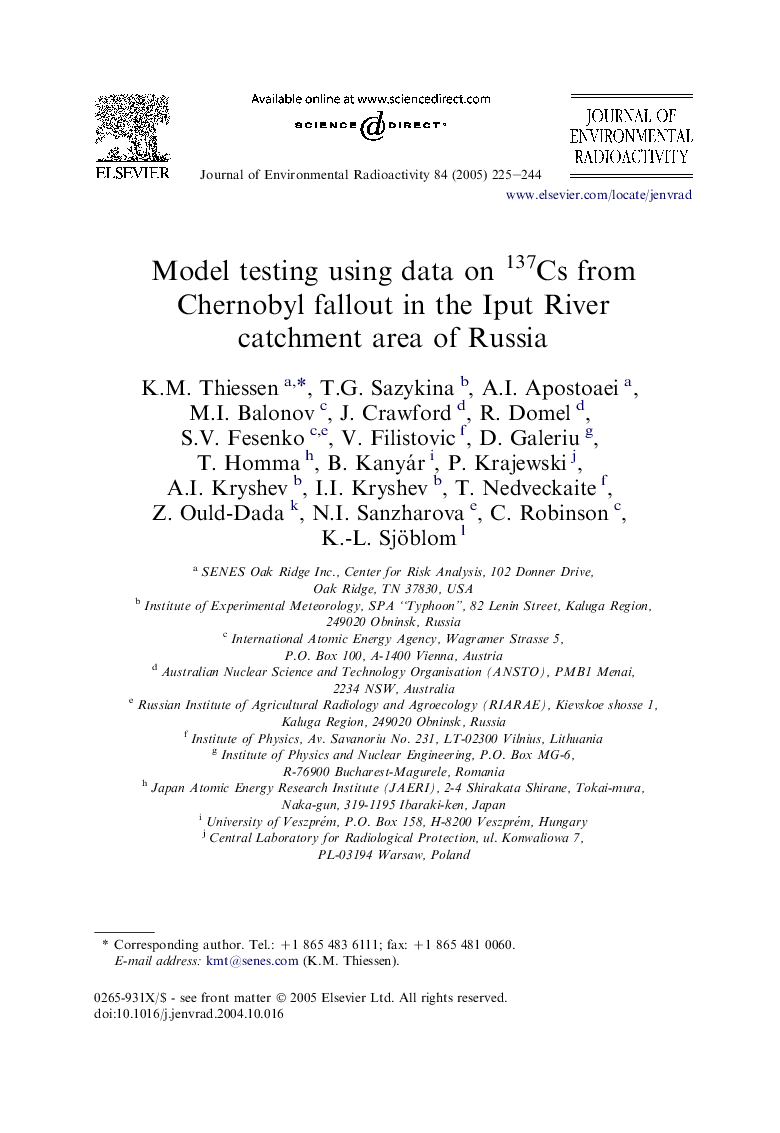| Article ID | Journal | Published Year | Pages | File Type |
|---|---|---|---|---|
| 10686789 | Journal of Environmental Radioactivity | 2005 | 20 Pages |
Abstract
Data collected for 10 years following the Chernobyl accident in 1986 have provided a unique opportunity to test the reliability of computer models for contamination of terrestrial and aquatic environments. The Iput River scenario was used by the Dose Reconstruction Working Group of the BIOMASS (Biosphere Modelling and Assessment Methods) programme. The test area was one of the most highly contaminated areas in Russia following the accident, with an average contamination density of 137Cs of 800,000 Bq mâ2 and localized contamination up to 1,500,000 Bq mâ2, and a variety of countermeasures that were implemented in the test area had to be considered in the modelling exercise. Difficulties encountered during the exercise included averaging of data to account for uneven contamination of the test area, simulating the downward migration and changes in bioavailability of 137Cs in soil, and modelling the effectiveness of countermeasures. The accuracy of model predictions is dependent at least in part on the experience and judgment of the participant in interpretation of input information, selection of parameter values, and treatment of uncertainties.
Related Topics
Physical Sciences and Engineering
Energy
Nuclear Energy and Engineering
Authors
K.M. Thiessen, T.G. Sazykina, A.I. Apostoaei, M.I. Balonov, J. Crawford, R. Domel, S.V. Fesenko, V. Filistovic, D. Galeriu, T. Homma, B. Kanyár, P. Krajewski, A.I. Kryshev, I.I. Kryshev, T. Nedveckaite, Z. Ould-Dada, N.I. Sanzharova, C. Robinson,
